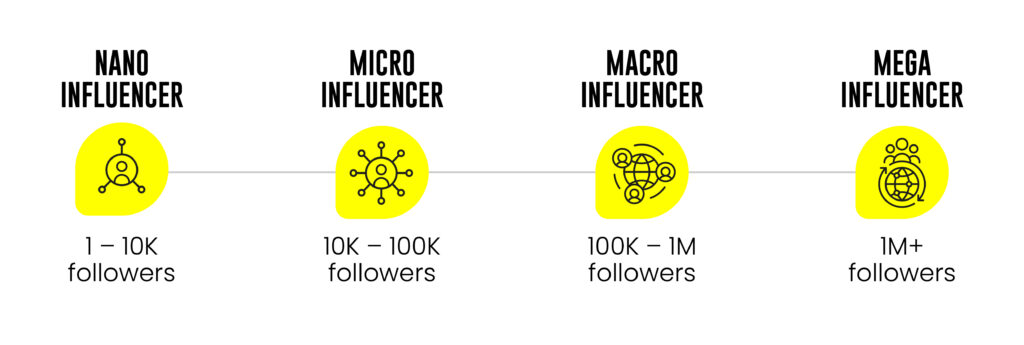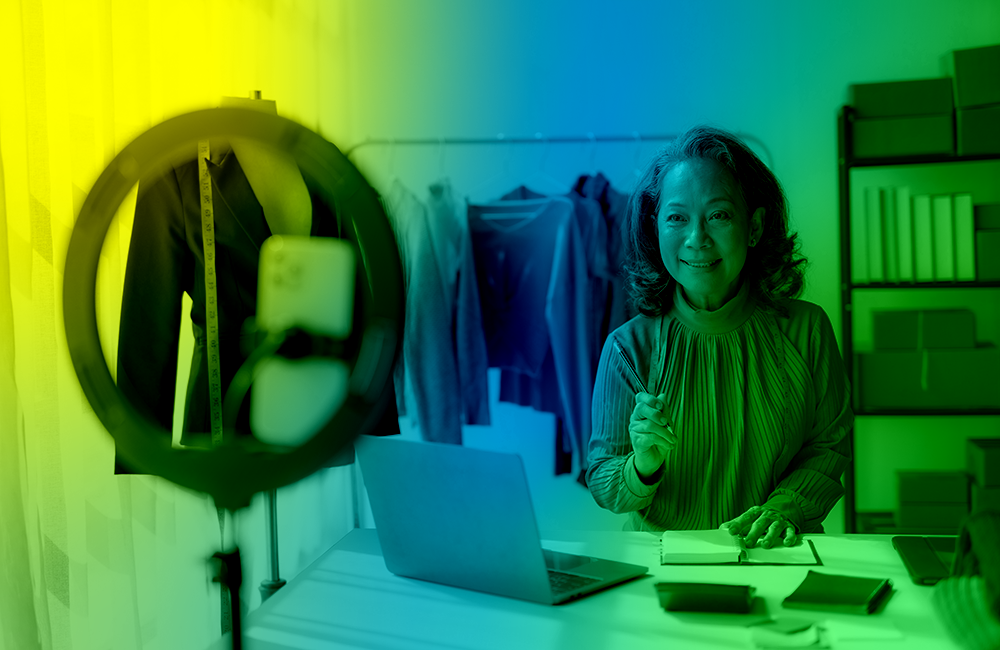Influencer Marketing in 2024
One thing we all know as marketers in 2024 is that, in one form or another, influencer marketing is here to stay.
When we first wrote about influencer marketing back in 2018, the market was worth a mere $4.6bn. By the end of 2024, the global social influencer marketing industry is set to be worth by $24bn. In the UK alone, spend on influencer marketing – which tripled between 2019 and 2023 – is expected to top £1bn by the end of next year.
With 90% of marketers believing that influencer marketing campaigns are effective, the challenge in 2024 and beyond is understanding how this ever-evolving sector can be best utilised when trends and technology are moving so quickly.
So, let’s look at the factors influencing influencer marketing campaigns in 2024.
1. Selecting the Right Influencer Platforms
Until relatively recently, Instagram was the platform that saw the majority of influencer content. But last year, TikTok took the top spot with a whopping 55.5% of brands using it for influencer campaigns. In 2024, this trend has accelerated even more with almost 70% using it.
TikTok’s growth in popularity can be attributed to the fact that it’s a highly engaging platform, with users typically spending almost 24 hours per month on the channel. And its emergence as a search tool is making it a valuable resource for people discovering new brands and products.
While TikTok looks set to hold onto its influential position for the foreseeable future, it’s important not to lose sight of the different demographics active on each platform. The first step in planning any influencer campaign is working out where your target audience is most engaged and being led by that data when deciding where to invest marketing budget.
2. Shifting demographics of influencers & followers
While plenty is said about the relevance of social influencers in the lives of Gen Z and younger, there is much less conversation around the proliferation of older influencers who are taking platforms by storm.
Although the numbers show that Gen Z remain the most likely to follow influencers – 84% versus 27% of Gen X – Gen X and boomers are active on social media and they’re engaged with the creators they follow. These older groups typically have a higher than average disposable income, and they know what matters to them and what they want to spend their money on.
As an older demographic of influencers has emerged, particularly around style, fashion, beauty, food, interiors and travel, they are increasing the opportunities for the right brands to reach audiences previously neglected by social influencer marketing. This is a trend that is only likely to increase as the market continues to mature.
3. The Democratisation of Influencer Marketing Content
As the industry has matured, the delineation between influencer, creator and professional have blurred. Instagram chief Adam Mosseri recently said that Meta is prioritising ‘creators’ over ‘publishers’, “because we believe power is going to continue to shift from institutions to individuals across industries”. He also suggested that Instagram is looking at how to better support smaller creators without a meaningful presence on other platforms, suggesting there will potentially be growing value in identifying micro influencers specialising in a specific platform for that truly authentic connection with a follower base.
There’s significant reputational risk in choosing the wrong influencers to work with and this is somewhere it’s all too easy for brands to come unstuck – with 34% of marketers saying they have difficulty finding the right influencers to work with and almost double that number being concerned about influencer fraud.
As the pool of influencers has grown, the time and effort required to find the right connections has increased. And, while macro influencers and celebrities have a place for some brands, we’ve long championed the advantages of nano and micro influencers. Tools such as Modash can be a useful resource, offering insights on factors such as engagement rates, most used hashtags and – crucially – the percentage of fake followers, but this is an area where the expertise and networks of an agency experienced at working with influencers across multiple brands can pay dividends.

4. Brand Ambassadors vs Influencers
As the sheer volume of influencers has grown, the potential for poor – inauthentic – matches between brand and creator has increased, just when it’s more important than ever for that authenticity and ‘fit’ to feel natural. Finding creators whose genuine interests and expertise you can tap into is key. These are the people who will connect you to audiences that are a good fit for your brand and who are more likely to be potential customers.
At one end of the influencer spectrum, there is content that’s pure advertising, with little or no genuine connection between the influencer and the brand or product being promoted. At the other end, there are long-term brand ambassadors and trusted influencers who share genuinely impartial content with highly engaged followers.
The primary distinction between a brand ambassador and an influencer is the longevity of the relationship and greater collaboration between the brand and the individual. For many brands, turning loyal customers and employees into brand ambassadors can be a powerful way to share authentic content, form deeper relationships with audiences and generate brand loyalty.
That’s not to say that there aren’t valid reasons for using influencers for short-term, focused campaigns. But, as with any activity, the crucial element is knowing when and how to employ the differing tactics.
5. The Rise of AI in Influencer Marketing
One trend that will be impossible to ignore in 2024 and beyond, is the impact of AI on influencer marketing. It’s a difficult area to make predictions about, because where AI’s potential will be most fully realised remains unclear.
Whether it’s being used for audience analysis, to streamline the management of influencer campaigns, to create hyper-personalised content, or to develop virtual influencers, what we know for certain is that its prevalence is going to increase exponentially.
Just last month, TikTok has announced that its ads will include generative AI avatars of creators and actors, as well as launching a dubbing function allowing creators and brands to reach global audiences, as part of a suite of AI-powered marketing tools.
Platforms and tech companies are playing catch up working out how to deal with the challenges posed by AI. Some are introducing ways of labelling content generated by AI tools, but with concerns around the authenticity of what we see online growing, how both users and platforms respond to this will be interesting to watch.
In an industry that’s constantly evolving, simply keeping up can seem like a full-time job. But influencer marketing is now embedded as a mainstream element of social media marketing strategies. To devise influencer marketing campaigns that meet a brand’s needs, it has to be handled with the expertise applied to any other marketing channel, creating campaigns that are intelligently targeted, aligned to wider marketing goals, and structured to deliver ROI.
The author: Jane Ainsworth is managing director of WPR. She has more than 25 years’ experience in developing and delivering communications strategies and impactful consumer PR for brands including Dunelm, Tesco, Warner Leisure Hotels, Greene King, Alton Towers, Beaverbrooks and Oxfam.
Want to
know more?

WPR is an award-winning PR agency, based in Birmingham, renowned for getting the world talking about the brilliant brands we work with. We specialise in consumer PR, across sectors including food and drink, retail and leisure; B2B PR, where we work with companies spanning manufacturing, construction and HVAC industries; and social media.
To start a conversation about how we can get the world talking about your business, please get in touch – we’d love to chat.
